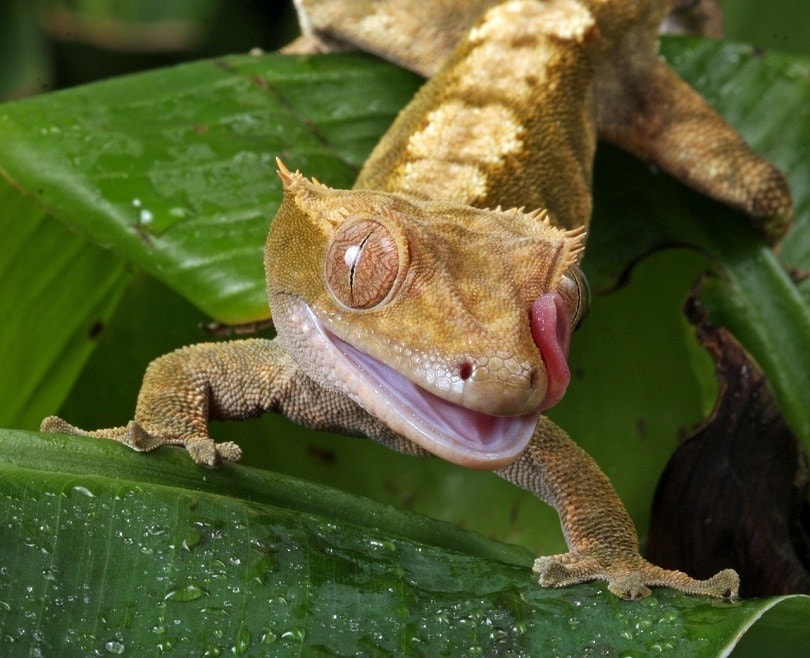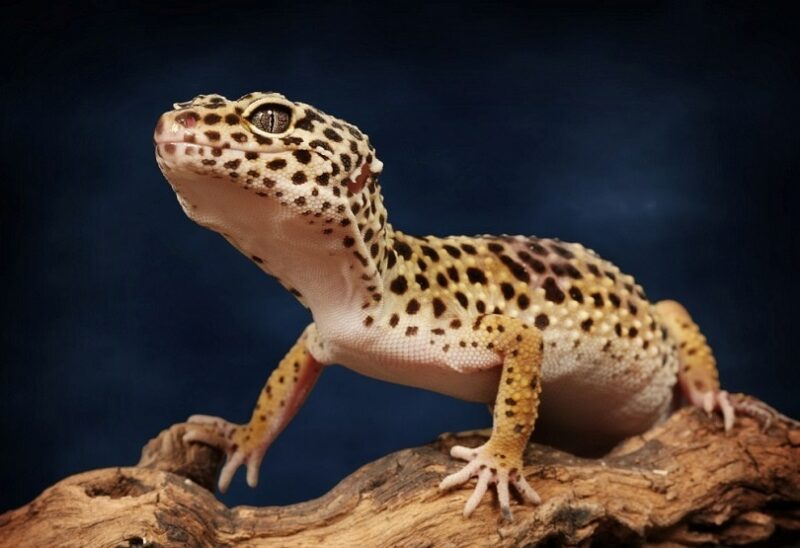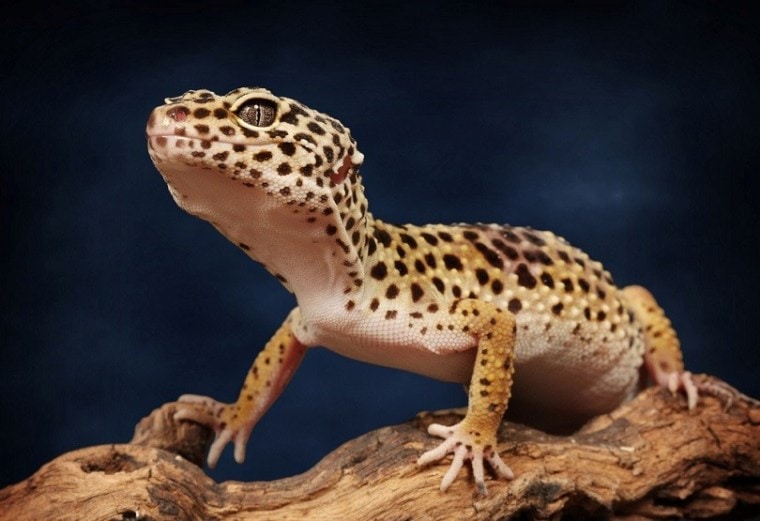
Hailing from the semi-arid and desert regions of Afghanistan, Iran, Pakistan, India, and Nepal, the Leopard Gecko is a ground-dwelling lizard that’s commonly kept as a pet. As its name suggests, this lizard has a white or pale-yellow body that’s covered with leopard-like dark brown spots.
Whether you have a Leopard Gecko or are thinking of getting one, we’ve put together some interesting facts about these lizards that may surprise you. So, sit back, relax, and enjoy reading about these cute little lizards that make good pets.
Top 10 Facts About Leopard Geckos
1. They Eat Their Own Shedded Skin
The Leopard Gecko sheds its skin periodically like other lizards, which isn’t unusual. What is a bit odd about the Leopard Gecko is that it eats its shedded skin, but not to clean up after itself! This gecko eats the dead skin so its predators are less likely to detect it as the eaten skin won’t give off any scent markers.
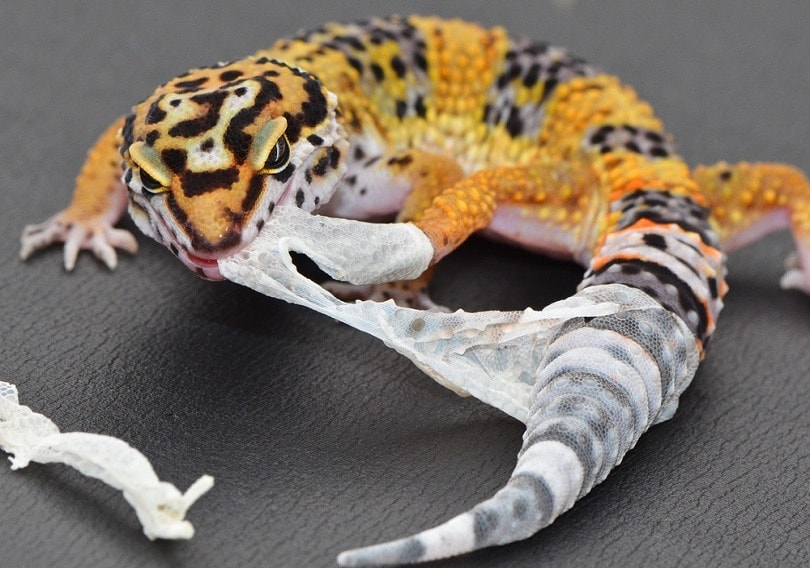
2. They Have a Useful Tail
A Leopard Gecko’s tail can be a real lifesaver! This lizard’s tail detaches if it’s bitten or caught on something so the animal can make a fast getaway when something is after it. The tail is also able to store fat so the Leopard Gecko won’t quickly die if it can’t find food. This lizard also shakes its tail when it’s hunting, mating, and defending its territory, making that long tail very important for survival!
3. These Lizards Have Eyelids
The Leopard Gecko is one of the few lizards with eyelids. Because it has eyelids, this gecko can close its eyes and blink. People who own Leopard Geckos love their little eyelids and adore how their lizards look like they’re winking when they blink!
Unlike other geckos with no eyelids, a Leopard Gecko’s eyelids surround the eyeball to give the eyes an expressive, almost human look. The next time you see a Leopard Gecko, take a close look at its eyes to see if it’s winking at you!

4. They Make Many Sounds Including a Bark
Like humans, Leopard Geckos make certain sounds to express how they’re feeling. This lizard can make a lot of sounds like chirps, screams, clicks, and squeaks. It also makes a barking sound which can alarm you if you’re a new Leopard Gecko owner! When it’s happy, a Leopard Gecko makes a squeaking noise. This can happen when you pick up a Leopard Gecko to show it some love.
You may hear this lizard emit a bird-like chirp when it’s unhappy, scared, or hungry. When it’s feeling threatened or being introduced to a new gecko, the Leopard Gecko can make an odd clicking noise.
This gecko can let out a scream or screech when it feels highly stressed or threatened. It can even bark, which sounds more like a hoarse chirp as a way to claim its territory or attract a mate.
If you’re thinking of getting a Leopard Gecko, it’s good to know your new lizard is going to make some noises. Take your time to learn about the various sounds these geckos make. This way, you’ll better understand your little guy’s language so the two of you can form a close bond!
5. They’re Without Sticky Pads on Their Feet
Unlike many geckos, Leopard Geckos are not good climbers and it’s not because they’re clumsy lizards. Other geckos like Crested and Tokay geckos have sticky pads on their feet so they can easily climb on a variety of surfaces, including walls. But Leopard Geckos don’t have these footpads because they have small claws instead.
These small claws allow Leopard Geckos to climb on rocks and large branches, but they won’t venture too high. You’ll never run across a Leopard Gecko in the wild walking up a wall because these lizards simply aren’t capable with those clawed feet of theirs!

6. Their Sex Is Determined By Temperature, of All Things
Unlike humans, Leopard Geckos don’t have a sex chromosome that determines if they’re born as male or female. This gecko’s sex is determined before it is born by its incubation temperature. At 90°F, most Leopard Gecko eggs hatched will be male, and at around 80°F, most of them will be female. If the temperature is in between, at 85°F, the eggs will hatch into half male and half female Leopard Geckos.
7. They Can Live for Two Decades
If you’re thinking of getting a young Leopard Gecko, you should know that these lizards can live for 20 years when kept in captivity. This is something to think long and hard about because two decades is a long time to care for a pet. So be sure you can handle it.
If you’re guessing that Leopard Geckos living in the wild have shorter lifespans, you’re right! In the wild, these geckos live for 3 to 5 years because they face many threats including predators, parasites, and diseases.

8. These Geckos Change Color as They Get Older
The leopard-like spots you see on Leopard Geckos go away as these lizards age. This is something that surprises many first-time owners as they watch their Leopard Geckos gradually lose their spots and become mostly one-colored.
By the time a Leopard Gecko is fully mature, it will look a lot different than what it did when it was young. It takes about a year for this change to happen and it usually occurs after the first shed. If a breeder tells you that a young Leopard Gecko with lots of spots will always look like that, don’t believe them! All Leopard Geckos eventually lose most of their spots as they age although some have a few left around the mouth, neck, and on the tail.
9. They Store Calcium in a Very Odd Place
If you look closely at a Leopard Gecko, you’ll notice it has two lumps under its armpits. These fatty-looking bumps are where the Leopard Gecko stores the calcium it eats.
Leopard Gecko owners feed their lizards calcium-dusted insects because these lizards don’t get enough calcium living in captivity. All that white dusty calcium is stored under the gecko’s front legs and used when needed. A Leopard Gecko won’t live long without calcium so always be sure those little bumps are always full when you get your gecko!
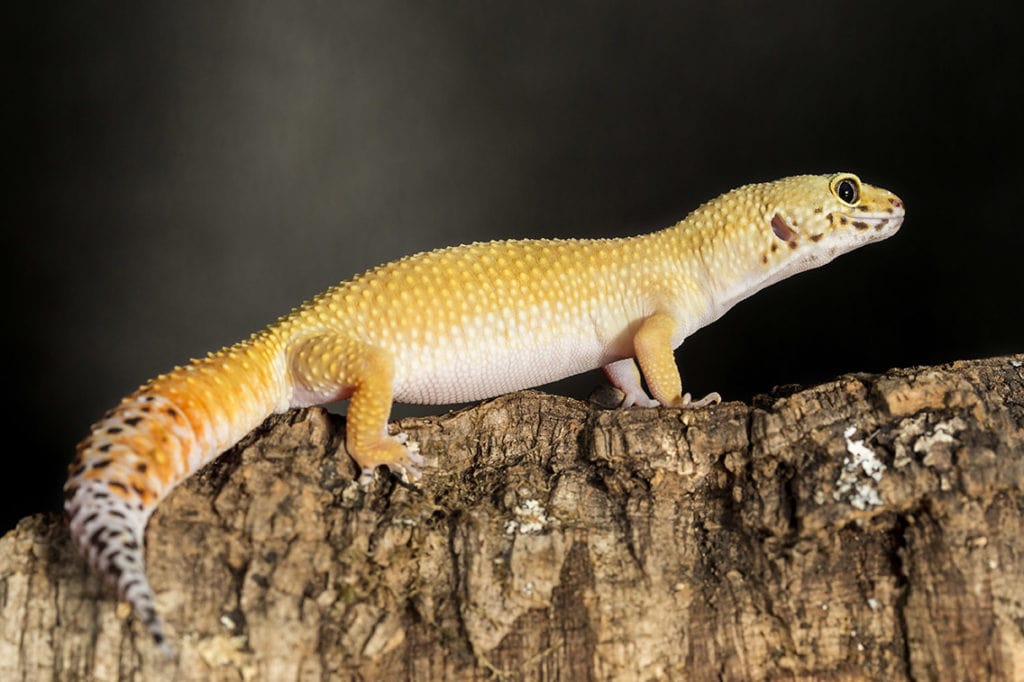
10. There Are Over 100 Leopard Gecko Morphs
While most people are used to only seeing Leopard Geckos with white or pale yellow bodies covered with dark brown spots, there are many more color variations of these geckos called morphs.
A morph is a variation in size, coloring, pattern, or other physical features of a Leopard Gecko. While some of these morphs are created naturally, most are developed by breeders who are simply trying to come up with new colors of these popular lizards. There are over 100 Leopard Gecko Morphs, with more being developed all the time, which means the total number of morphs that may be created is anyone’s guess!
Conclusion
Now that you’ve learned some fun and interesting facts about Leopard Geckos, you can appreciate these popular lizards even more! If you plan on getting a Leopard Gecko, be sure to set up a proper habitat for your little friend so it can live a long and healthy life. You’ll surely enjoy having one of these lizards as a pet because Leopard Geckos are colorful, easy to handle, and fascinating to watch!
Featured Image Credit: Reinhold Leitner, Shutterstock


